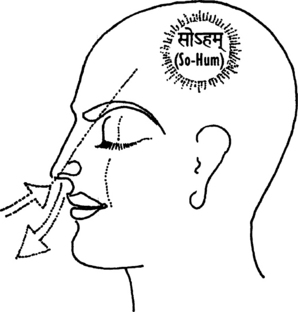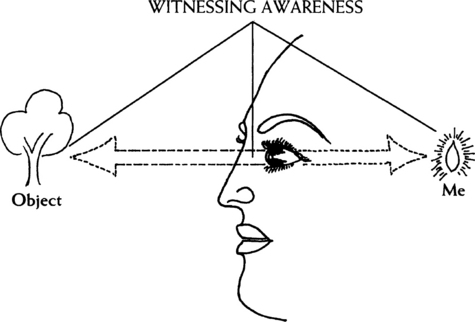
Meditation is an art of bringing harmony to body, mind, and consciousness. Life with meditation is a flowering of bliss and beauty. Life without meditation is stress, confusion, and illusion.
During ancient times meditation was often considered a way of life. Truly, meditation is not separate from daily living, but as a discipline, we have to practice certain techniques, methods, and systems. Once we have practiced a form of meditation and mastered it, that discipline stays with us in every aspect of our lives. So whatever technique you do, whatever system you follow, according to the instruction given by your teacher, please do that.
But what is meditation, and what is not?
Meditation is not concentration. In concentration we narrow the mind, and a narrow mind is a limited mind. We need that limited, pointed, concentrated mind to probe into any subject, to solve problems, to learn a language, to fly an airplane. We need it. But not in meditation.
In concentration we build a wall of resistance, and in the effort to control the mind, we lose energy. Some people meditate that way for an hour, and when they’re finished, they feel tired, because for that hour they were fighting and fighting, negating everything, saying no to all thoughts and perceptions, trying to focus the mind.
Concentration is all-exclusive, but meditation is all-inclusive. Meditation is open, choiceless awareness. Everything is welcome. Meditation says yes to everything, while concentration says no to everything.
Concentration is effort. Wherever there is effort, there is a maker of the effort. The maker of the effort is the ego. Concentration nourishes the ego, the maker of the effort. The more the concentration, the more ego.
In meditation, there is no effort and no effort-maker. Therefore there is freedom. You are just sitting quietly and listening to everything, whether it is the call of a bird, the cry of a child, the rustle of the leaves. Every sound is welcome. Whatever the sound, allow it to come to you. When you listen to the sound, you become the center and the sound is peripheral, rushing toward you, to meet with you.
In listening to any kind of sound without judgment, without criticism, without liking or disliking, you become the center and all sounds rush toward you, to dissolve into you. Follow the sound. Allow it to pass through you. Don’t resist. Then a magical phenomenon happens. You become empty. You become silent, pure existence.
When a breeze comes to you, allow that breeze to pass through you. No effort, no resistance. Remember, peace is not the opposite of sound. Every sound dissolves into peace. You are that peace, and sound comes to meet with you and dissolve into you.
Look at any object, a tree, a flower, even the wall. There is no choice in the looking, no judgment, just choiceless observation.
Awareness is the act of listening, the act of looking. No effort is required, no concentration. In awareness, in meditation, concentration happens naturally. It is given to you as a gift. But in concentration, in choosing, you miss meditation.
In expanded, empty consciousness, thinking stops, breathing becomes quiet, and one simply exists as pure awareness. In that state there is great joy, beauty, and love. Individual consciousness merges with Cosmic Consciousness, and one goes beyond time and thought.
In that state, whether the eyes are open or closed does not matter. It comes like a breeze without invitation, because this state is your true nature—love, bliss, beauty, and awareness. There is no fear, no depression, no anxiety, no worry, no stress. One becomes the witness of anxieties, worries, and stress. In that state, healing occurs.
This is what is called discipline. Discipline means learning, and one who is learning is called a disciple. So we have to learn the art of discipline. Discipline means putting everything in its right place. Thought has a right place, desire has a right place, job has a right place, duty has a right place. Discipline brings harmony in our life. Therefore discipline and meditation go together. There is no meditation without discipline, and no discipline without meditation. They are one. Mind in meditation is mind in discipline.
The so-called concentrated mind is a controlling mind. A confused mind controls. But a mind that is free, alert, and aware is blissful. That mind is a disciplined mind. And discipline is the perfume of life. Without that perfume, life never becomes celebration.
When you meditate, sit with your back straight. If you can, sit in the Lotus pose (or Half Lotus if that is more comfortable for you). If that is not comfortable, you can sit on a chair but keep your vertebral column erect.
With persistent practice, you can increase the time you spend in the Lotus to one, two, or even three hours. If one sits properly in a Lotus pose for three hours a day, enlightenment will soon come.
Sitting in the Lotus pose helps to open the heart. Breathing becomes quiet, and thinking automatically slows and stops. To go beyond thought is to go beyond suffering, because it is thought that creates suffering.
Sit comfortably and quietly with your palms up and open and placed on your knees, like empty bowls. Open your mouth slightly, and touch the tongue to the roof of the mouth, behind the front teeth.
Begin by paying attention to your breath. Let your lungs breathe with no effort on your part. Simply watch the movement of your breath. Inhale. Exhale.
During inhalation, air touches the inside of the nostrils. Be aware of that breath. During exhalation, again air touches the nostrils. The ingoing air feels cool, the outgoing air is warm. For a fraction of a second, enter into your nose! Sit in the nostril and watch your breath: ingoing, outgoing, ingoing, outgoing. Let your lungs do their job. You are simply sitting and watching.
After five minutes, follow the breath. When the lungs inhale, go with the air into the nose, to the back of the throat, the trachea, lungs, heart, diaphragm. Go deep down behind the belly button, where you will experience a natural stop. For a fraction of a second, the breath stops. Stay in that stop, then when the lungs exhale, again follow the breath as it reverses its course. Come up from the belly button to the diaphragm, heart, lungs, trachea, and throat, back to the nose, then out of the body.
During exhalation the air goes out of the body to about nine inches in front of the nose, where there is a second stop. Again, stay in that stop for a moment.
These two stops are very important. The first stop is behind the belly button, the second outside the body in space. As your awareness rests in these two stops, time stops, because time is the movement of breath. When breath stops, mind stops, because mind is the movement of breath. When the mind becomes quiet, you simply exist, without body, without mind, without breath.
In that stop, you become like an empty bowl, and when you become an empty bowl, divine lips will touch you. God will come to you, to pour out his love. You do not need to seek God, for God is seeking you. From ages past, God is seeking an empty bowl, to fill with his love. But all bowls are full of desire, ambition, business, competition, success and failure.
Just sit quietly and stay in the stop. That stop is a door. Simply enter the door and jump into the inner abyss. You will feel an extraordinary tranquillity and peace surrounding you.
Practice this meditation for 15 minutes in the morning and in the evening. Over the days, weeks, and months, you will find your time in the stops naturally increasing until, eventually, inner and outer will merge and everything will happen within you.
NOTE: If you are more comfortable, you may practice this meditation in a prone position.

In So-Hum meditation we sit quietly and watch our breath, as in the Empty Bowl meditation, but we add the sound So on inhalation, Hum on exhalation. (Only silently; we don’t speak the sounds aloud.)
When sound, breath, and awareness come together, it becomes light. We have seen that every atom radiates light and heat energy, which is a quantum wave. The moment we pay attention to our breath and start feeling So-Hum, So-Hum along with the breath, our breath becomes a quantum wave and radiates light. You may see that light of life at the third eye.
Inspiration (breathing in) is living; expiration (breathing out) is dying. When a child is born, with its first breath life expresses itself with inspiration. When someone dies, we say he has expired. The breath has gone out.
Hum means “I” or “individual ego”; So means “He, the Divine.” So in the natural course of So-Hum meditation, when So goes in, life energy goes in and Hum, ego, our limited individuality, goes out. That is the significance of So-Hum meditation. When you inhale So, you are inhaling life. When you exhale Hum, you are exhaling ego and limitation.
So-Hum meditation properly practiced leads to the union of the individual with the universal Cosmic Consciousness. You will go beyond thought, beyond time and space, beyond cause and effect. Limitations will vanish. Your consciousness will empty itself, and in that emptying it will expand and peace and joy will descend as a benediction.
In Vedic science, witnessing is called samyag darshan. This is a process of looking outward and inward simultaneously.
When we look at a tree, a star, a mountain, or a flower, something goes out from our eyes, touches the object, and comes back to us. That which goes out of our eyes in order to touch the object of perception, we call attention. Ayurveda says that attention happens when prana goes out and carries the vibration of awareness toward the object. Thus, attention is awareness plus prana, movement.
One arrow goes out and touches the object. At the same time, a second arrow of attention should go inside, toward the center of our heart, to observe the observer. At the time of looking, when you look at the object outside, at the same time, look at the looker; watch the watcher; observe the observer. What happens when the watcher is watched is that the watcher disappears. This simple watching, without a watcher, is called witnessing. In that witnessing, you develop intimacy, relationship, with the object of perception.
